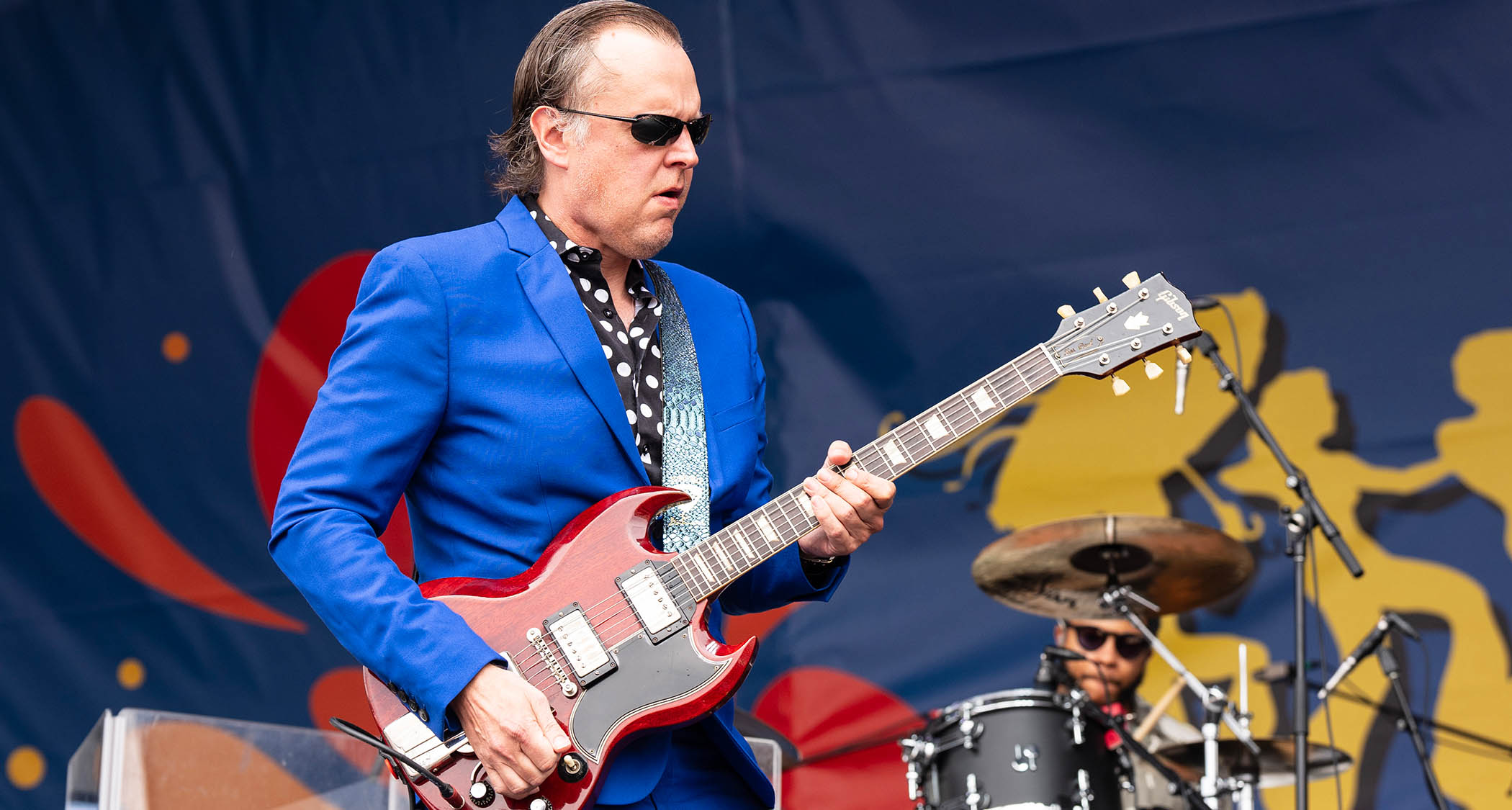“You realise these things are designed for hospitals, and MRI machines?”: Joe Bonamassa reveals the secret to keeping his tube amps sounding their best night after night – and he “nicked it” from Angus Young
Tube amps are like fine wine; they often don’t travel well. But a power gizmo designed for clinical settings keeps Bonamassa’s epic touring rig in top form

Ask any touring pro and they’ll tell you the same thing; the road is tough on tube amps, and it is not just the constant moving around and hot and cold environments they are exposed to.
Not all mains power is created equal, and so when travelling across borders – or even from venue to venue in the same city – the power your amp is receiving is not always going to be the same. And if the amps are not receiving the same power each night, they won’t sound the same.
What is a touring guitarist to do? Joe Bonamassa has the answer. He uses a power conditioner made by the Japanese electronics specialist Kikusui to keep his amps running at a consistent 120V, at 60Hz. No more, no less. And he got this idea from the crown prince of high-voltage rock ’n’ roll, AC/DC's Angus Young.
“I watched Angus Young’s rig rundown, and he said, ‘Angus prefers his Marshalls, and he has nine stacks, at 240, at 50 Hz, worldwide. And I said, ‘You know what? That makes so much sense,’” says Bonamassa, himself speaking in a rig rundown, offering American Musical Supply a guided tour of his stage setup. “Because when I would bring this stuff over to Europe, we’d be running at 115, 120, but 50 Hz – such a huge difference in harmonic [content]. And so I bought one, and now we have two because we’ve got to split the rig because we were flaming out a couple of times.”
Before you head over to Electronics-R-Us, take a moment. These Kikusui power conditioners are serious pieces of kit.
“They are also $6,000/$7,000 apiece,” says Bonamassa. “They’re heavy. But when you have something of this magnitude you want to just go to Walgreens and get a power strip.”
And they were not designed for the touring musician. Bonamassa and his team have become acquainted with the people at Kikosui and they were taken aback that their tech was being used onstage. Kikusui had the operating theatre in mind when they made these.
Want all the hottest music and gear news, reviews, deals, features and more, direct to your inbox? Sign up here.
“They’re like, ‘Joe, we’ve heard about guys like yourself and Angus Young, and people like that using them,’” says Bonamassa. “‘You realise these things are designed for hospitals, and MRI machines? We never thought they were going to tour.’”
When you consider that they were designed for clinical settings it is little wonder they are so reliable, capable of generating power and making up a shortfall to ensure the amps get the juice they need to keep JoBo's electric guitar tone on point. “I want 120. I like 120,” says Bonamassa. “It keeps it at 60Hz, at 120. If it is seeing 110 it makes it 120.”
Check out the full rig tour above. There is some great insight into the practicalities of a touring rig, and why he won’t be shelling out mega-bucks for NOS Mullard tubes when a good set of JJ tubes gets the job done. You can subscribe to the American Musical Supply YouTube channel for more.
In other Joe Bonamassa news, the blues guitar superstar has announced a third date to his Rory Gallagher Celebration concerts at the Marquee, in Cork, Ireland. Bonamassa will now play on the 3rd July 2025. He will be playing Gallagher covers all night. You can get your tickets here.
Jonathan Horsley has been writing about guitars and guitar culture since 2005, playing them since 1990, and regularly contributes to MusicRadar, Total Guitar and Guitar World. He uses Jazz III nylon picks, 10s during the week, 9s at the weekend, and shamefully still struggles with rhythm figure one of Van Halen’s Panama.


